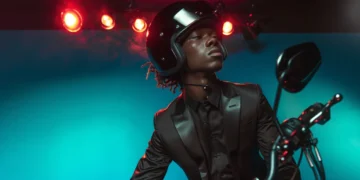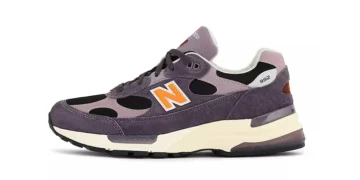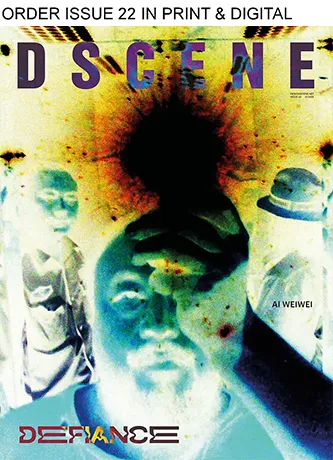
You’ve seen celebrities like Brad Pitt and Ryan Gosling sporting sleek motorcycle helmets that cost more than most people’s monthly rent. Motorcycle helmets have transformed from basic safety equipment into coveted fashion accessories that rival designer handbags and luxury watches. This shift represents fashion’s latest borrowing from subculture, where the gritty authenticity of motorcycle culture meets high-end craftsmanship.
The transformation didn’t happen overnight. What began as purely functional gear designed to protect riders has evolved into statement pieces that communicate personal style and status. Premium helmet makers like Hedon now create products with the same attention to detail you’d expect from luxury goods manufacturers, using hand-finished materials and limited production runs.
Modern riders view their helmets as investment pieces alongside their watches and leather goods, often owning multiple helmets for different occasions. The result is a market where spending £300-600 or more on a helmet has become not just acceptable, but expected among style-conscious riders.
The Evolution: From Function to Fashion
Motorcycle helmets changed from purely protective gear to stylish accessories over decades of cultural change and technological advancement.
The Safety-First Era
During the 1950s through 1980s, motorcycle helmets served one primary purpose: keeping riders alive. These early designs prioritized protection over appearance. The helmets were bulky and heavy. Most featured basic fiberglass or plastic construction with minimal padding inside. Color options were limited to black, white, or sometimes bright orange for visibility.
RELATED: Men’s Statement Suits for Fall Winter 2025.26
Motorcycle culture during this period focused on function rather than fashion. Riders chose helmets based on safety ratings and durability. Style considerations were secondary. Racing helmets showed slightly more variety in graphics and colors. However, even these designs remained focused on aerodynamics and impact protection rather than aesthetic appeal.
Manufacturers designed products for serious riders who prioritized protection over looks.
The Turning Point
The late 1980s and 1990s marked a significant shift in helmet design philosophy. Custom motorcycle culture began influencing mainstream riding gear aesthetics. The cafe racer revival played a crucial role in this transformation. Riders wanted helmets that matched their vintage-inspired motorcycles. This demand sparked interest in retro styling and classic proportions.
Improved materials allowed for sleeker designs without compromising safety. Carbon fiber and advanced composites enabled thinner shells and better ventilation systems. Independent brands emerged with design-focused approaches. These companies understood that riders wanted helmets reflecting their personal style and motorcycle culture identity.
Biker culture evolved beyond purely functional concerns. Riders began viewing their gear as extensions of their personality and lifestyle choices. Retro motorcycle helmets became particularly popular during this period. The combination of classic aesthetics with modern safety standards appealed to style-conscious riders.

Fashion’s Motorcycle Moment
Major fashion houses began collaborating with helmet manufacturers, while social media transformed these protective pieces into highly visible lifestyle accessories. The combination of designer involvement and visual culture elevated helmets from garage gear to runway-worthy items.
Designers Enter the Chat
High-end fashion brands started taking motorcycle culture seriously in the 2010s, making the same part of their accessory collections. They saw an opportunity to tap into the rebellious spirit that Marlon Brando made famous in “The Wild One.” Luxury collaborations became the norm. Fashion houses began working with established helmet makers to create limited-edition pieces. These weren’t just standard helmets with designer logos slapped on.
The leather jacket had already proven that motorcycle-inspired fashion could work in luxury markets. Designers applied the same thinking to helmets. They focused on premium materials and craftsmanship. Independent brands led the charge. Companies specializing in motorcycle apparel started hiring fashion designers. They created helmets that looked as good hanging on a wall as they did on the road.
The café racer revival played a huge role. This minimalist motorcycle style demanded equally clean helmet designs. Café racer helmets became symbols of refined taste rather than just protection.
The Instagram Effect
Social media changed everything for motorcycle fashion. Helmets became photogenic props in lifestyle photography. You could showcase your style even while wearing full protective gear. Visual culture made helmets more visible than ever. Riders started posting outfit photos that included their motorcycle jacket and helmet combinations. These posts reached audiences far beyond the riding community.
Influencers began collecting helmets like handbags. Multiple helmet ownership became normal. You needed different styles for different bikes and occasions. The hashtag culture around motorcycle-inspired fashion exploded. Posts featuring stylish riders in premium gear regularly went viral. This exposure brought helmet design to fashion-conscious consumers who might never ride.
Lifestyle branding took over. Helmet companies started marketing their products as fashion accessories first, safety gear second.
What Makes a Helmet “Luxury”?
Luxury motorcycle helmets go far beyond basic safety requirements. They combine premium materials with exceptional craftsmanship to create pieces that rival high-end fashion accessories.
Premium Materials Make the Difference
The best luxury helmets use top-tier materials like carbon fiber for ultra-lightweight construction. Premium fiberglass shells offer superior strength while maintaining sleek profiles.
Hand-finished paint jobs replace mass-produced graphics. Many luxury brands use multiple coat processes that create deep, rich colors you won’t find on standard helmets.
Craftsmanship Sets Luxury Apart
Skilled craftspeople carefully construct each helmet with attention to detail.
Limited production runs ensure exclusivity. When you buy a luxury helmet, you’re often getting one of only hundreds made in that specific design.
Design Philosophy Matters
Luxury helmet makers focus on minimalist aesthetics and timeless silhouettes. Clean lines and understated elegance replace flashy graphics and busy designs.
Interior comfort gets premium treatment too. Leather linings and custom-fit padding create a first-class experience every time you ride.
Beyond Basic Safety Standards
While all helmets must meet ECE or DOT certification, luxury options often exceed these requirements. Advanced ventilation systems and noise reduction technology add functional value.
Motorcycle brands like Harley-Davidson recognize this shift toward premium gear. Riders now expect their helmets to match the quality of their bikes and gloves.
Investment-Grade Quality
Today’s luxury helmets cost £300-600 or more, similar to premium leather goods or watches. Many riders buy multiple helmets to match different riding styles and outfits.
The New Rules of Motorcycle Fashion
Motorcycle fashion has completely changed. You no longer just buy gear for protection – you buy it to make a statement. Your helmet is now an investment piece, just like a luxury watch or leather jacket. Riders regularly spend £300-600 or more on a single helmet. This isn’t just about safety anymore.
You collect helmets like accessories. Many riders own multiple helmets for different moods and outfits. Some even display them as home decor when not riding.
The modern motorcycle wardrobe follows new rules:
- Helmets match your style, not just your bike
- Motorcycle boots work with jeans for daily wear
- Graphic tees with vintage bike logos are streetwear staples
- Riding boots transition from road to sidewalk
Your gear is not just protection. It signals that you do things your own way. Motorcycle culture has always stood for freedom and nonconformity, which is why fashion keeps returning to it. You mix real rider gear with sharp pieces from your wardrobe: a premium helmet with perfectly cut denim and worn‑in boots. Luxury and grit in the same frame. That mix is everywhere now. People who have never touched a bike are pulling on motorcycle boots and leather jackets for the attitude alone.
The helmet is what anchors it. Whether you choose a clean matte black shell or loud graphics, it becomes a signature. Brands such as Hedon show how a helmet can be as considered as a bag or a pair of shoes, not just something you throw on before you ride.
What once lived in the garage now appears on the runway. Motorcycle style has moved from pure utility into fashion, and helmets came with it.
Today a helmet can sit in the same category as a watch or a handbag. Premium makers like Hedon create pieces that easily cross the £500 mark, not for a logo, but for how they are made: hand‑finished paint, refined composites, leather interiors that feel closer to a luxury accessory than a piece of kit.
Riders build small collections. One stripped‑back helmet for the city, another with bold graphics for long weekends. Each one says something slightly different about the person wearing it. That is the real shift. Your helmet choice now speaks as clearly as your jacket or boots. Social media amplified that, turning helmets into visible style markers rather than something that disappears the moment the ride ends.
Motorcycle helmets now sit where protection, design and personal identity meet. You are not just buying safety.



















